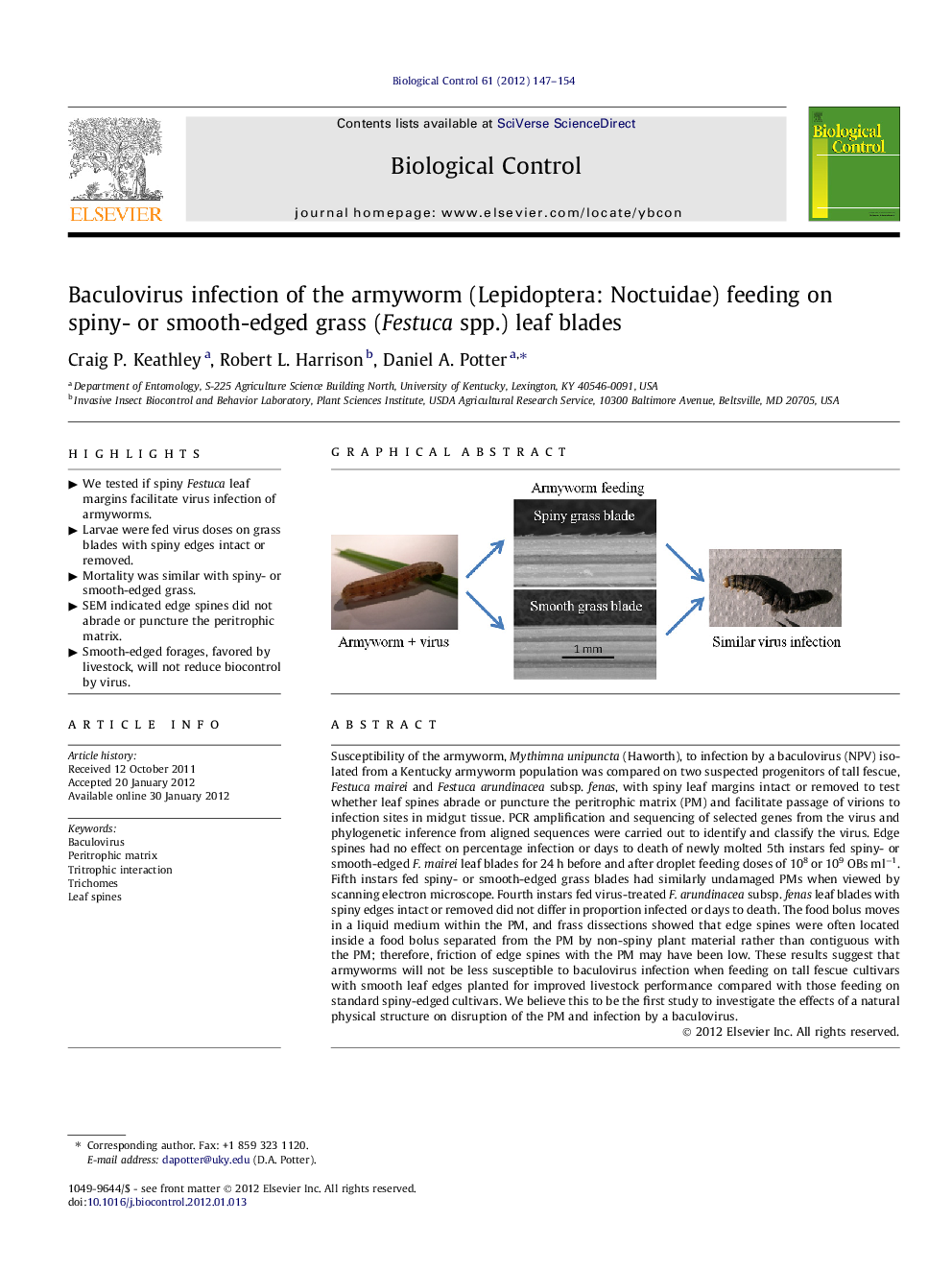| Article ID | Journal | Published Year | Pages | File Type |
|---|---|---|---|---|
| 4504115 | Biological Control | 2012 | 8 Pages |
Susceptibility of the armyworm, Mythimna unipuncta (Haworth), to infection by a baculovirus (NPV) isolated from a Kentucky armyworm population was compared on two suspected progenitors of tall fescue, Festuca mairei and Festuca arundinacea subsp. fenas, with spiny leaf margins intact or removed to test whether leaf spines abrade or puncture the peritrophic matrix (PM) and facilitate passage of virions to infection sites in midgut tissue. PCR amplification and sequencing of selected genes from the virus and phylogenetic inference from aligned sequences were carried out to identify and classify the virus. Edge spines had no effect on percentage infection or days to death of newly molted 5th instars fed spiny- or smooth-edged F. mairei leaf blades for 24 h before and after droplet feeding doses of 108 or 109 OBs ml−1. Fifth instars fed spiny- or smooth-edged grass blades had similarly undamaged PMs when viewed by scanning electron microscope. Fourth instars fed virus-treated F. arundinacea subsp. fenas leaf blades with spiny edges intact or removed did not differ in proportion infected or days to death. The food bolus moves in a liquid medium within the PM, and frass dissections showed that edge spines were often located inside a food bolus separated from the PM by non-spiny plant material rather than contiguous with the PM; therefore, friction of edge spines with the PM may have been low. These results suggest that armyworms will not be less susceptible to baculovirus infection when feeding on tall fescue cultivars with smooth leaf edges planted for improved livestock performance compared with those feeding on standard spiny-edged cultivars. We believe this to be the first study to investigate the effects of a natural physical structure on disruption of the PM and infection by a baculovirus.
Graphical abstractFigure optionsDownload full-size imageDownload as PowerPoint slideHighlights► We tested if spiny Festuca leaf margins facilitate virus infection of armyworms. ► Larvae were fed virus doses on grass blades with spiny edges intact or removed. ► Mortality was similar with spiny- or smooth-edged grass. ► SEM indicated edge spines did not abrade or puncture the peritrophic matrix. ► Smooth-edged forages, favored by livestock, will not reduce biocontrol by virus.
